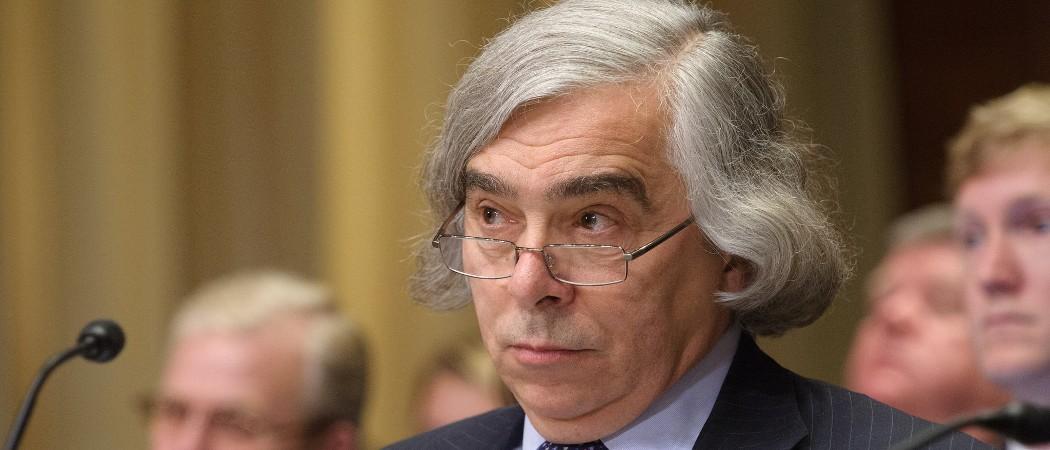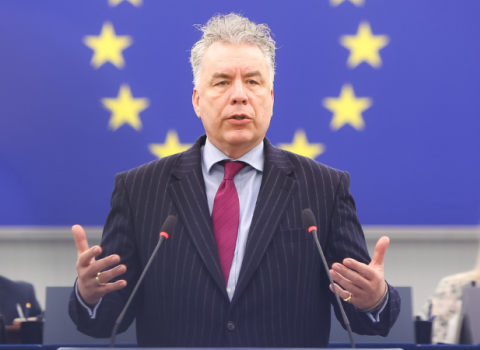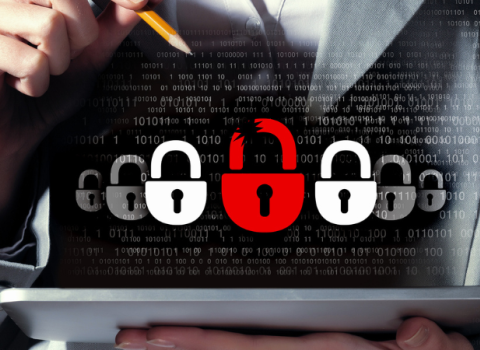‘We are overreacting’ to the risk of IP or security leaks at universities, warns ex-US energy secretary. Confusing signals from Washington endanger science, say academic leaders

Ernest Moniz, a former MIT administrator and US energy secretary, says the US' overreaction to China's threat is having negative consequences for science and research. Photo: SenateEnergy / Flickr
For years, big advances in science and technology have propelled economic growth world-wide. Now, as geopolitical tensions mount, leaders of the US scientific community fret that rising government security measures may kill the goose that laid the golden egg.
A tightening of US security procedures for science, begun in the Trump administration but still continuing today, risks disrupting the open nature of science, said Tobin Smith, senior vice president of the Association of American Universities. Speaking at a Washington science policy workshop, he said, “I caution against going too far [on security]. Our very job at universities is to disseminate knowledge.”
Likewise, Ernest Moniz, a former MIT administrator and US energy secretary, warned, “We are overreacting” on security. In the case of China relations, the US has already “taken a number of missteps, or at least questionable steps”, including prosecuting some researchers on charges of hiding ties to Chinese institutions. Instead, Moniz urged the US and China to take “opportunities to build greater collaboration across a number of fronts,” such as joint research on carbon sequestration and on the disposal of nuclear reactor waste in underground boreholes.
Such comments, coming at a workshop 14 and 15 November held by the National Academies of Sciences, Engineering and Medicine (NASEM), highlight what is emerging as a top policy worry of the huge American scientific enterprise: that a continuing government effort to prevent key US science or tech secrets from leaking to rival countries – especially China – will damage the science system itself.
That system, researchers say, has long depended on sharing research results openly, and welcoming foreign students and researchers to US campuses. But, as a September report by NASEM put it, “the US research community has seen an extraordinary increase” in security measures which “limit the exchange of ideas, participation by others, and international collaboration, slowing the pace of research.”
‘How do I commit treason?’
Indeed, many academics feel targeted by law enforcement and security services. Victor McCrary, research vice president at the University of the District of Columbia, told the workshop that while some researchers may be insufficiently aware of security risks, “I don’t think that faculty members wake up and ask themselves, ‘How do I commit treason against the US?’”
Of course, such concerns aren’t limited to American universities. The UK, Germany, France, Canada and other US allies are restricting science collaboration with Russia because of the Ukraine war, and urging that universities beware Chinese talent recruitment efforts. But, as the world’s largest scientific enterprise and western alliance leader, the US has been particularly influential – for instance, coordinating its science security reviews with those of other Group of 7 leading economies.
For the US, China is the biggest worry. After huge investments over the past few decades, China is now the second-biggest science spender in the world, and has already overtaken the US in the number of research papers published annually. Its students and researchers are also a big part of the American tech world, supplying 25% of the foreign science and engineering PhDs working in the US, according to the Science and Technology Policy Institute, a research think tank advising the White House. Altogether, foreign science and engineering talent – whether from China or elsewhere – provides 1.7% to 1.9% of US gross domestic product.
After years of encouraging international collaboration, Washington under former President Donald Trump launched a “China Initiative” to stop what it called intellectual property theft by Chinese-born scientists working in US universities. After some courtroom embarrassments, the Justice Department scrapped the programme earlier this year.
But this month, even as hopes of a possible thawing in US-China relations rose after a meeting of US President Joe Biden and China’s Xi Jinping, the US government is still busy blocking Chinese access to US semiconductor technology; the National Science Foundation is developing a new centre for security risks; and the national security agencies published a toolkit to “protect research, technology, and personnel from theft, abuse, misuse, or exploitation.” Meanwhile, various US government agencies have been adding extra conditions to grant contracts requiring tighter controls, broadening the definitions of what scientific work is classified and expanding the use of a grey category of “unclassified controlled” research. That is “pretty close to an oxymoron,” Moniz joked.
All of this adds to the already-high obstacles to international science collaboration.
‘I am patient’
At the NASEM workshop, James Crowe, head of the vaccine lab at Vanderbilt University, listed some of the hindrances he has encountered in collaborating with foreign partners on vaccines against Ebola and other infectious diseases. He listed 20 obstacles, such as difficulties getting import permits for plant or biological samples from the Department of Agriculture or Centers for Disease Control, and differences in funding rules by grant agencies. Between US and foreign restrictions, it can take seven to nine years to get a study done. Now, from experience, he said, when planning a new collaboration “I don’t have any expectations around time. I am patient.”
At the same time, researchers abroad complain about the change in US security attitudes. Patricia McBride, an American physicist currently working at the CERN particle accelerator near Geneva, said that among colleagues “there is a growing perception the US is not very welcoming to collaboration.”
And in Washington, a very public split has emerged between what different parts of the government think should happen. On one hand, the White House and State Department have been moving to promote science cooperation with allies, and advocate for the “soft power” of science diplomacy. A string of new science cooperation deals – with the EU Japan, Finland, the UK, Canada and others – suggests a post-Trump thawing in science policy. But law enforcement and security services haven’t been endorsing that: this summer Federal Bureau of Investigation director Christopher Wray said, “The greatest long-term threat to our nation’s information and intellectual property, and to our economic vitality, is the counterintelligence and economic espionage threat from China.”
The conflicting signals from Washington has many academics fuming. A report last week from MIT, where the Justice Department recently dropped its charges against a prominent Chinese-American researcher said, “The absence of clear, coherent, consistent federal policy guidance regarding research and education interactions with China is disrupting academic decision-making and has harmed the US scientific enterprise.” The report, co-chaired by associate provost Richard Lester, warned of pressures in both countries “to erect higher barriers” to research collaboration, and spelled out several measures MIT will take to enhance security without sacrificing scientific openness.
Some researchers argue that the solution is to stick to a policy laid down in 1985 by then-President Ronald Reagan, at the height of the Cold War. His national security directive said, “To the maximum extent possible, the products of fundamental research remain unrestricted,” and “where the national security requires control, the mechanism for control […] is classification.” If strictly followed, many academics say, that policy would avoid confusion about how to navigate the grey zone of economically important but unclassified research. But others argue that science and geopolitics have changed too much since 1985 to roll back the clock, and that new policies are needed.
The real problem, many feel, is politics. Distrusting China is a rare policy area on which both Republicans and Democrats in Congress agree, so any suggestion to tighten security against China can get written into law – and that has knock-on effects on scientific relations with other countries.
Further, the security and science communities simply don’t see eye to eye. Rather than working together, observed Bruce Held, a retired CIA official at the workshop, the security and academic communities “are totally talking past each other.”





 A unique international forum for public research organisations and companies to connect their external engagement with strategic interests around their R&D system.
A unique international forum for public research organisations and companies to connect their external engagement with strategic interests around their R&D system.